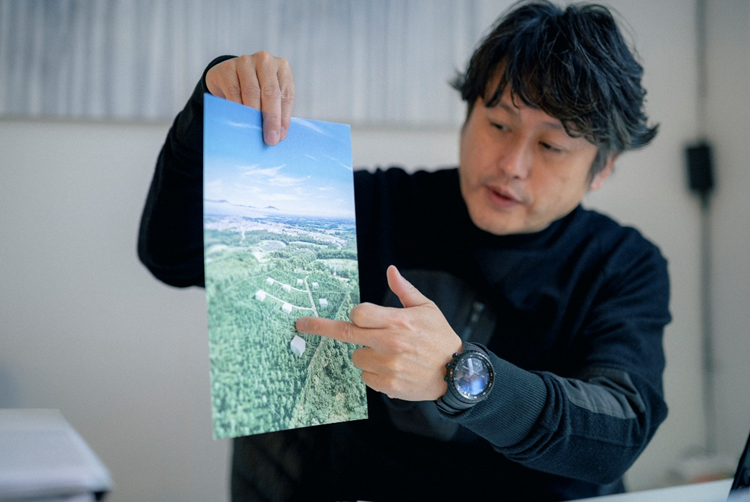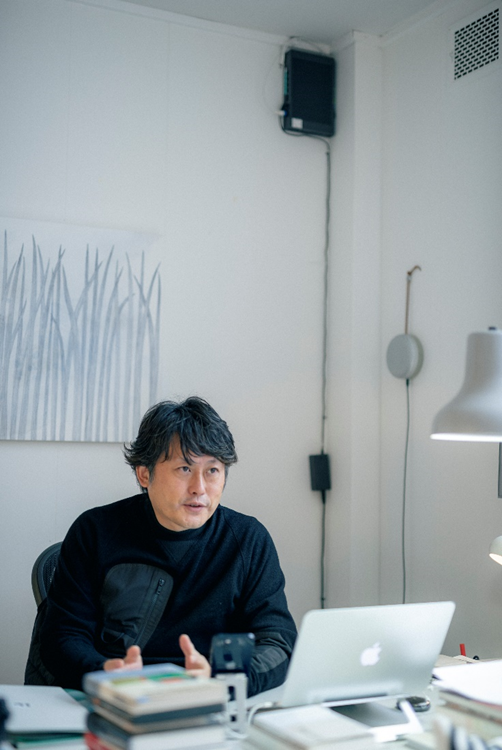
Abashiri City is at first glance an unbecoming city in the eastern Hokkaido. Like many other similar small-scale cities, it has been feeling the effects of Japan’s demographic problems, primarily stemming from a low birth rate combined with an ageing society. This has resulted in the population decreasing by about 10,000 in the last 20 years, falling to a total of under 34,000 as of today. However, being a port city, Abashiri does have its advantages. It is in an ideal location for fishing, which still forms an important part of the regional economy. In winter, drift ice can be seen in the Sea of Okhotsk, attracting tourists. And last but not least: the magnificent nature of nearby Shiretoko National Park, a UNESCO-inscribed World Heritage Site, is another highlight.
“Despite all of the beautiful nature, which includes mountain, forest and sea, Abashiri does not have any brand power” says Jun Igarashi, a famous local architect who has launched a pioneering project to revitalize the area through his architecture. “Despite being only 30 minutes from Memanbetsu Airport, not even people from Hokkaido come to Abashiri.” Igarashi has roots in the region, and in recent years felt a desire to change this status quo. “At present, it is near impossible to simply sell land in this area, meaning that I felt the need to somehow add value to the region.”

Igarashi might be the perfect man for the job. A devout follower of modernism in his architectural style, he has gained fans the world over with his striking designs. “One of my biggest goals when creating any building is ensuring that it fits – not only to what my client wants, but also to the environment where I am building it.” Indeed, one of Igarashi’s most ardent beliefs when it comes to his work is that he must ensure coexistence; between his buildings, the area’s climate conditions, the scenery, and the environment as a whole. So far, most of his buildings have been designed in and for Hokkaido, and he has become a master in creating lasting designs for his home prefecture. “I want to create buildings that feel connected, that go beyond being a singular piece of infrastructure.” He was the first Japanese architect to win the Barbara Cappochin Biennale International Grand Prix, one of numerous accolades he has received in his illustrious career.

This newest project is located in the Tentozan area, which lies just outside Abashiri in the woods. “I think the area is perfect, as it is secluded in the forest but also close enough to Abashiri and the airport to be convenient” explains Igarashi. Named “TENTOZAN VILLAGE Project”, it features plans for 8 total villas. “The villas themselves are multipurpose, each has a different theme and can be used in a variety of ways. No two designs are the same.” When pressed for more details, Igarashi complies: “So far I have designed 4 out of 8 villas. Villa 1 is a massive space of almost 500 square meters. It can accommodate up to 10 people and is ideal for a bigger family to live long-term, or as a shared secondary space for a company that can operate remotely.” Now we became intrigued.

“Next, I set out to design Villa 3. This is a very special place. Smaller in scale at just about 180 square meters, it features an open concept second floor that contrasts with the high walls and therefore high privacy of the first floor. Therefore, the first floor is perfect to live, while the second floor can be used as a shop or atelier.” We have already noticed a pattern. “In all these designs, I wanted to make sure that these are not some sort of ultra-exclusive private mansions where the local inhabitants never see who lives there. These buildings are meant to be shared, whether as a co-working space such as Villa 1 or a commercial space such as Villa 3.” There seems to be a strong aspect of community integration in Igarashi’s plans. “Villa 4 and 7, the other two I have completed thus far, are a little bit more traditional: 4 is a classic holiday house, while 7 is a more family-oriented design. However, here too I have made sure to incorporate large spaces with big windows that can accommodate a showcase of some sort, whether it be of one’s art as part of a gallery or just hosting friends and acquaintances for a dinner party.” While these designs are aimed at a higher end audience, there is an atmosphere of openness rather than exclusivity to each space.
To hear Igarashi put it: “Of course, this project is not some sort of government-funded initiative for rural revitalization. At the same time, I grew up here and I am passionate about eastern Hokkaido. I want to create something sustainable and beneficial for the local community as well.” He wants to position Tentozan area, and the region, as an alternative to the glitzy luxury that has taken hold in Niseko, for instance. “Niseko has been bought up by Chinese and Australian investors, who seem to be in competition to build one glamorous retreat after another. This completely shuts out the local community.” In Tentozan area, you can imagine a more relaxed lifestyle. The flexibility of each of the villas makes for a comfortable stay, whether as a holiday or temporary accommodation or something more long-term. Igarashi knows how to sell it: “You are literally on the doorstep of one of the greatest natural spectacles on our world in Shiretoko.”

How to revitalize local areas in a way that is beneficial for everybody, including the locals, is a pressing question in Japan given the country’s demographic situation. Igarashi’s project is based on passion and love for his home but might become a model on how to attract foreign investment and new inhabitants to a region that has not seen such an influx for decades. “I simply want people to come here and say: wow, this place is so cool. I could see myself living here.” The winning combination of Igarashi’s incredible modern designs with eastern Hokkaido’s spectacular nature is sure to deliver such a reaction.

Architect: Jun Igarashi
Jun Igarashi’s work asks for the universal value of architecture, while premising coexistence with the climate, climatic conditions, and landscape of Hokkaido. It goes beyond the existence of a single building and thinks about the beginning of architecture, while constantly searching for the “state” of “the primitive place of human beings.” He creates a rich and unique space while understanding the environment of Hokkaido. His ideas and concept have attracted attention not only from Japan but also from overseas, and in 2005, he was the first Japanese to win the BARBARA CAPPOCHIN International Architecture Award Grand Prix (Italy), and also took a lecture as a visiting professor at Oslo University of Architecture. He has since given many lectures abroad.
TENTOZAN VILLAGE
https://www.tentozan-village.com/